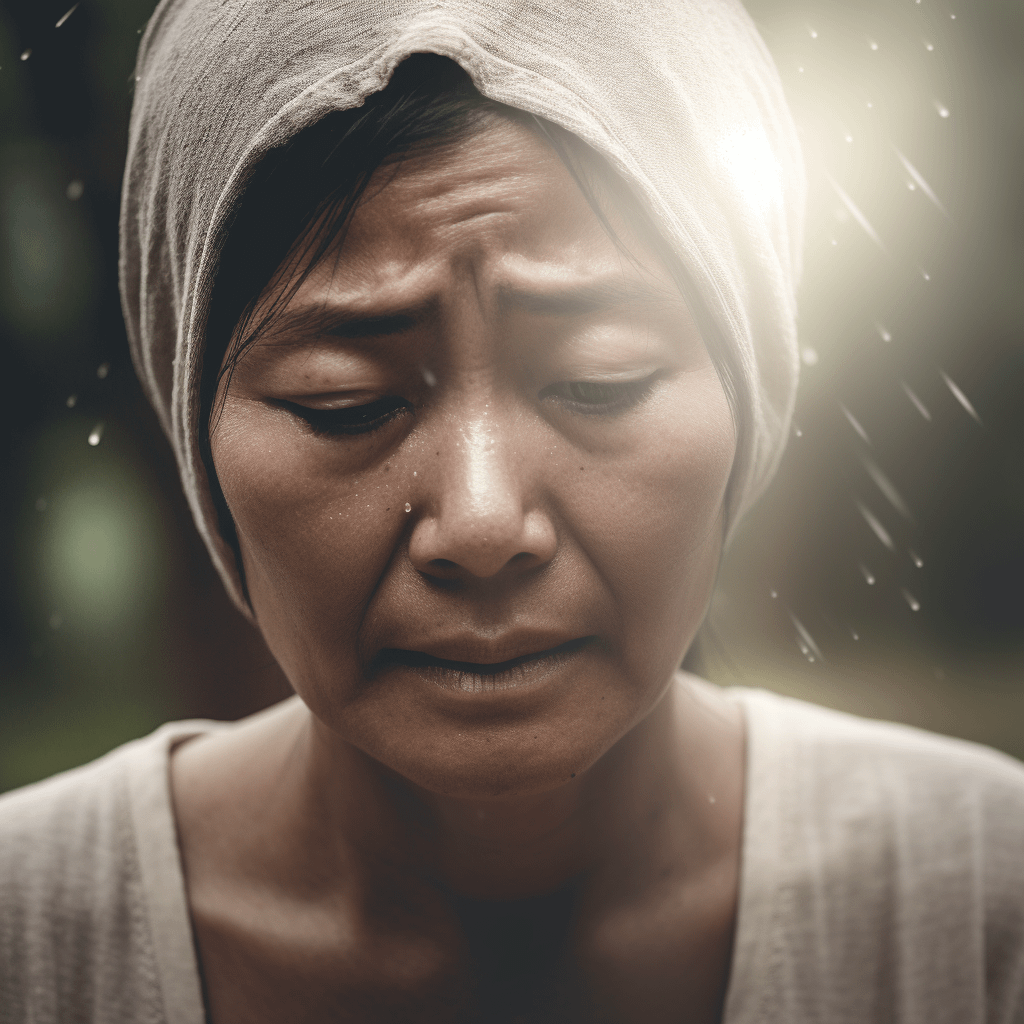Sexual abuse is a serious and traumatic experience that can have long-lasting effects on a person’s physical, emotional, and psychological well-being. Unfortunately, it is an all too common occurrence, with millions of people affected every year. There are many types of sexual abuse, and it’s important to understand them in order to raise awareness and prevent such acts from happening. In this article, we will discuss the different types of sexual abuse and their impact on survivors.
What Is Sexual Abuse?
According to Psychology Today, sexual abuse, also known as sexual assault or sexual violence, is any form of non-consensual sexual activity, including but not limited to unwanted sexual touching, forced oral sex, rape, and other coercive sexual acts. The key factor that distinguishes sexual abuse from consensual sexual activity is the lack of consent, which means that the activity was not agreed upon by both parties involved.
Consent should be informed, voluntary, and can be withdrawn at any time during a sexual activity. Therefore, any sexual act that is committed without clear and enthusiastic consent constitutes sexual abuse.
Contact Abuse vs. Non-Contact Abuse
Sexual abuse can be categorized into two main types: contact and non-contact abuse. Contact sexual abuse involves any form of physical interaction or contact between the abuser and the survivor. This can include a range of behaviors from unwanted touching, kissing, and groping, to more severe forms like sexual assault or rape. Any form of sexual contact without consent is considered contact sexual abuse.
Non-contact sexual abuse doesn’t involve direct physical touch but can be equally damaging. This can include actions such as exhibitionism, voyeurism, or forcing the other person to watch or participate in pornography. Making sexually explicit phone calls or messages can also be included.
Non-contact sexual abuse can be as distressing and harmful as contact sexual abuse. Just because there’s no physical contact doesn’t make it any less serious. All types of abuse can have profound and long-lasting effects on a person’s mental and emotional health.
Four Types of Sexual Abuse
Sexual abuse takes on many forms, not all of which involve physical contact or violence. In addition to contact and non-contact sexual abuse discussed previously, it can be categorized into four categories: verbal sexual abuse, physical sexual abuse, covert sexual abuse, and ritualistic sexual abuse.
- Verbal Sexual Abuse: This type of abuse occurs when an individual uses sexual language, comments, or suggestions to degrade, intimidate, or manipulate another person. It’s a form of psychological harm that can lead to feelings of embarrassment, worthlessness, and fear. Words can cause significant emotional pain and distress, even if there’s no physical contact involved.
- Physical Sexual Abuse: This is the type of sexual abuse most commonly recognized. It involves any unwanted sexual activity or behavior through physical force or coercion. This can range from inappropriate touching or groping to forced intercourse or rape. Physical sexual abuse could leave physical and emotional scars, leading to severe trauma.
- Covert Sexual Abuse: Also known as hidden sexual abuse, covert sexual abuse involves actions that are sexually abusive while often disguised as innocent or normal behavior. This can include behaviors like inappropriate comments, unnecessary exposure, or unwanted discussions about sex. Due to the insidious nature of this abuse, many people might not realize they’re being abused until much later.
- Ritualistic Sexual Abuse: This is a particularly heinous form of abuse, involving sexual acts that are part of rituals or ceremonies. Often associated with certain cults or organized groups, people are forced to participate in sexual activities under the guise of religious or cultural practices. These kinds of abuse can be exceptionally traumatic due to the added layer of religious or cultural violation.

What Is Sexual Assault?
Sexual assault is a broad term that describes any unwanted sexual act or behavior that is threatening, violent, forced, or coercive and to which a person has not given consent or was not able to give consent. This includes but is not limited to penetration, attempted rape, forcing someone to perform sexual acts, fondling, and sexual contact with someone who cannot consent.
Sexual abuse typically refers to a sexual act committed against a child or vulnerable adult by someone in a position of power or authority, such as a child and an adult or a patient and a doctor. It often involves grooming behaviors, a gradual process used by sex offenders to draw targets into a sexual relationship and maintain it in secrecy. Grooming steps usually include targeting the individual, gaining their trust, filling a need, isolating them, and sexualizing the relationship. Though there are distinctions between sexual assault and sexual abuse, both encompass types of sexual assault and are severely harmful and punishable offenses.
Sexual assault describes unwanted sexual acts or behaviors that are threatening, violent, forced, or coercive and to which a person hasn’t given consent or wasn’t able to give consent.
Sexual Abuse Definition and Examples
Sexual abuse is a multifaceted crime involving a variety of behaviors aimed at manipulating or violating another person sexually. For example, a person who forces another individual to engage in sexual activity without consent is committing sexual abuse. Other examples include sexual exploitation (like prostitution or sex trafficking), unwanted sexual advances, non-consensual sharing of intimate images or “revenge porn,” child sexual abuse, or grooming. The underlying theme of all these actions is the lack of consent.
What Is Rape?
Rape is a form of sexual assault, but not all sexual assaults are considered rape. The distinction lies in the nature of the act itself. Rape is often used as a legal term to describe sexual penetration carried out without consent. According to RAINN and the FBI’s definition for its Uniform Crime Reports, rape is defined as “Penetration, no matter how slight, of the vagina or anus with any body part or object, or oral penetration by a sex organ of another person, without the consent of the victim.”
The act of rape involves a specific type of sexual assault that includes penetration, with the lack of consent remaining the major factor. Rape can occur between individuals of any gender, and it can happen in any kind of relationship, not just between strangers. Understanding this definition helps in accurately recognizing and addressing the crime of rape.
What Is Date Rape?
“Date rape,” as defined by the Cornell School of Law, is a type of sexual assault involving non-consensual intercourse during or after a voluntary social engagement between the survivor and an acquaintance. This can include individuals in a romantic or potentially sexual relationship. It’s a disturbingly common form of what’s also known as “acquaintance rape.”
Contrary to common misconceptions about “stranger danger,” statistics on sexual abuse indicate that 8 out of 10 people know their attackers. Notably, the majority of these assaults are committed by relatives, current or former spouses, partners, or lovers.
What Is Rape by Deception?
Rape by deception (also known as rape by fraud) is a form of sexual assault where the perpetrator deceives the target into believing certain facts or circumstances, thereby gaining their consent to engage in sexual activity under false pretenses. This form of sexual abuse hinges heavily on the idea of informed consent, in which all parties involved have the right to know and understand the reality of their situation before giving their consent. The deception can range from lying about one’s identity, marital status, or health condition to more severe cases like impersonating someone else entirely.
The legal interpretation of rape by deception varies among states and situations. For instance, in Boro v. People (1985), the court ruled that deceit to induce fear did not meet the standard of rape. However, in a later case, a man was convicted for impersonating a woman’s boyfriend and engaging in sexual activity with her without her knowledge of his true identity. This complex and evolving area of law continues to be the subject of much debate and scrutiny.
What Are the Types of Child Sexual Abuse?
Child sexual abuse is a grave offense involving any form of sexual engagement with a minor, typically classified under the broader category of sexual assault. Anyone under 18 cannot legally give consent to sexual acts with adults, rendering all such encounters as abusive and unlawful. Some exceptions could possibly include “Romeo and Juliet laws.”
Broadly, the types of childhood sexual abuse can be split into two categories: contact and non-contact abuse. Contact sexual abuse may involve actions like fondling, forced sexual intercourse, or any other type of sexual activity. Non-contact sexual abuse, while not involving direct physical interaction, can be equally damaging. Examples include exhibitionism, forced masturbation in front of the child, involving the minor in the creation or distribution of child sexual abuse imagery, or involvement in child sex trafficking.
Don’t let anyone silence you – your voice deserves to be heard.

Institutional Sexual Abuse and Sexual Violence
Institutional sexual abuse refers to situations where a third-party institution, like a school, church, or sports team, is implicated in the events. These scenarios generally occur when the institution fails to prevent abuse or actively covers it up.
Sexual violence in these settings can vary widely. The institution may face various types of sexual assault charges based on their role in the abuse. Liability will often extend beyond the individual perpetrator, acknowledging the systemic failures that allowed types of sexual violence to occur.
Human Trafficking
Human trafficking is a form of modern-day slavery involving the illegal trade of people for exploitation or commercial gain. A crime against humanity, it is a horrific violation of human rights that encompasses different types of abuse, including sexual abuse, economic exploitation, and violations of international and labor laws. This can manifest in many forms, such as forced labor, forced marriage, debt bondage, and commercial sexual exploitation.
Trafficking survivors are typically coerced into these situations through deception, threats, or violence. The role of third-party institutions like hotel chains can be significant in these cases. They may become legally responsible if they fail to identify and report suspected trafficking activities.
Clergy Sexual Abuse
Clergy sexual abuse is a severe form of sexual violation that simultaneously constitutes religious abuse. This abuse involves religious figures exploiting their positions of power and trust to engage in non-consensual sexual activities with vulnerable individuals, often children or young adults. The abuser (a priest, pastor, or another religious authority) uses the sanctity and respect of their religious role to manipulate others and ensure silence.
This dual abuse — sexual and religious — can exacerbate the extent of the trauma. It not only violates their physical and emotional integrity but also deeply shatters their spiritual beliefs and trust. The power dynamics at play in these situations are particularly egregious: The perpetrators hide behind the veil of religious authority and often remain protected by the institutional structures of their religious organizations.
For those seeking to track and understand the scope of such abuse, Bishop Accountability provides a comprehensive abuse tracker and archives news reports on cases worldwide.
Catholic Church Sexual Abuse
The Catholic Church has faced increasing scrutiny and legal action over numerous allegations of sexual abuse by clergy. Among the numerous ongoing cases, one significant example is in Illinois, where an investigation found that more than 450 Catholic clergy sexually abused nearly 2,000 children since 1950. This story demonstrates that abuse was more pervasive than the Church had previously acknowledged.
This revelation is echoed by a report commissioned by the U.S. Conference of Catholic Bishops, which revealed that between June 2017 and June 2018, the Catholic Church in the United States spent over $300 million on costs related to clergy sexual abuse. This includes nearly $200 million in legal settlements fought for by the plaintiffs’ clergy sexual abuse attorneys.
“Lookback windows,” which temporarily suspend the statute of limitations to allow past abuse survivors to file lawsuits, have been critical in revealing the full extent of the Church’s sexual abuse scandal. “Lookback windows” vary by state and time; a sexual assault civil lawyer should know more about your specific case’s possibilities.
Institutional sexual abuse refers to situations where a third-party institution, like a school, church, or sports team, is party responsible. These institutions can be forced to pay survivors in civil cases or may face various types of sexual assault charges.
Boy Scouts Sexual Abuse
The Boy Scouts of America has faced intense legal scrutiny due to allegations of widespread sexual abuse within the organization. In a landmark settlement, Boy Scouts sex abuse lawyers representing the survivors secured a staggering $2.46 billion settlement, the largest sexual abuse case in U.S. history.
These funds are dedicated to processing sexual abuse claims filed by thousands of individuals. The compensation received can significantly assist people in affording therapy and other resources to help cope with the traumatic aftermath of abuse.
Campus Sexual Abuse
Campus Sexual Abuse (CSA) is a grave concern across the nation, accounting for a shocking 43% of all on-campus crimes in the United States. This translates into an average of eight forcible sex offenses per 10,000 students, a chilling statistic from the American Psychology Association that underscores the need for concerted action. A staggering 90% of assaults on campuses are not reported, often due to fear, shame, or perceived lack of support.
In such complex and emotionally charged situations, a school sexual abuse attorney can offer advice and assistance. These professionals can guide individuals through interactions with law enforcement and school administrators, ensuring their rights are protected. They can also assist in holding the guilty parties, including the educational institutions, accountable for their actions or inaction.
Athletics Sexual Abuse
Sexual abuse within athletics is an alarming issue, often involving coaches or trainers exploiting their positions of authority to exploit athletes. It’s prevalent not only in youth sports but also in adult sports.
A notable instance of this is the case of Larry Nassar, a former USA Gymnastics team doctor, convicted of multiple sex crimes. Accused by hundreds of women and girls, Nassar was sentenced to 40 to 175 years in prison for sexual assault. Subsequently, Michigan State University, where Nassar was previously employed, reached a historic $500 million settlement.

Resources for Sexual Abuse Survivors
Abuse survivors often need support and resources to help them cope with their traumatic experiences and to seek justice. Here are some resources that could be invaluable:
- The Rape, Abuse & Incest National Network (RAINN): RAINN operates the National Sexual Assault Hotline and offers a range of support services for survivors of sexual assault and their families.
- National Sexual Violence Resource Center (NSVRC): NSVRC provides research, tools, and educational resources to help prevent and respond to sexual violence.
- Safe Horizon: This organization offers numerous services, including counseling, legal assistance, and emergency housing for abuse and assault survivors.
- StrongerThan.org: We offer a range of services to support sexual abuse survivors, including connecting survivors to therapists, support groups, and lawyers.
There is no “right” way to heal, and every journey is unique. Finding the right resources and support can make a significant difference in navigating the healing process.
Health and Medical Assistance
The journey towards healing after sexual abuse can be challenging, but professional resources are available to aid in this process. Mental health providers specializing in treating sexual abuse survivors offer several therapeutic options. When you are ready to seek help, consult a licensed practitioner who can suggest the most appropriate course of action, which may include specialized therapies or medications.
Some therapy types include:
- Accelerated Resolution Therapy is a form of psychotherapy that aims to reduce trauma-related symptoms.
- EMDR (Eye Movement Desensitization and Reprocessing) can be effective in treating traumatic memories.
- Cognitive Behavioral Therapy (CBT) can help in modifying harmful thoughts and behaviors associated with the trauma.
- Trauma-Focused Cognitive Behavioral Therapy (TF-CBT) is a specialized form of CBT designed to help children and adolescents cope with trauma.
- Art Therapy is an expressive form of therapy that uses art to help individuals heal.
Reach out to the National Sexual Assault Hotline at 1-800-656-HOPE (4673) or the National Domestic Violence Hotline at 1-800-799-7233 for immediate support. They can also guide you to local resources, including counseling and medical facilities. Reaching out for assistance is a significant step; there are professionals ready to support you.
Financial Assistance
According to the CDC, the cost of child and adult sexual abuse, including social services and lost productivity, is substantial, with lifetime fiscal costs per survivor exceeding $122,000. Compensation is essential to cover these costs. With the high expenses of mental health care and medical treatment, survivors deserve access to these resources.
Financial settlements from civil cases can provide necessary funds for mental health treatment, physical care, housing, and more. Compensation for survivors can ease the financial burden, allowing them to focus on their health.
Legal Assistance
Navigating the legal system following an incident of sexual abuse can be overwhelming. Reaching out to a sexual abuse lawyer can help in understanding the intricacies of the law and assessing possible options for your case. Sexual abuse cases fall into two categories: criminal and civil. Criminal cases, usually pursued by the state, can lead to a prison sentence for the offender. On the other hand, civil cases are initiated by the survivor and aim to get financial compensation for the harm suffered.
Both types of cases have their own merits. Criminal cases can bring the perpetrator to justice, and civil cases can offer financial assistance for recovery. Knowing the various types of sexual offenses is vital for deciding which legal route to pursue. A skilled sexual assault civil lawyer can guide you through the complex legal process, providing much-needed support and expertise.
Transform your pain into your greatest strength
What Types of Evidence Can Be Used for Sexual Abuse Claims?
A variety of evidence types can be used to support different forms of sexual abuse claims. These can include:
- Physical evidence, such as injury documentation or DNA
- Witness statements
- Documentation of the abuser’s grooming behaviors
- Psychiatric evaluations
- Past accusations or convictions against the perpetrator.
Each case is unique, and the appropriate evidence depends on the circumstances of the abuse. A knowledgeable sexual assault lawyer can guide you in collecting and presenting this evidence.
What Is a Rape Kit?
A rape kit, also referred to as a sexual forensic exam, is a crucial tool in the investigation and prosecution of sexual abuse cases. The kit collects evidence such as clothing, hair, and bodily fluids, which can provide crucial DNA evidence and physical proof of the assault. Due to certain constraints like the statute of limitations, time is of the essence when dealing with rape kits.
A sexual assault attorney can play a key role in ensuring this evidence is utilized effectively in court. A sexual assault attorney can guide clients through the complex legal process and help ensure the kit is processed in time to bring the offender to justice.
It’s okay to take all the time you need to heal.
Get Help Healing From Different Types of Sexual Abuse
The journey toward healing from sexual abuse can be overwhelming, but you are not alone. Connecting with professional help, from therapists to legal aid, can provide much-needed support.
The dedicated team at StrongerThan.org is committed to supporting survivors of sexual abuse. Our experienced sex abuse lawyers can guide you through the legal process and work tirelessly to get the justice you deserve. Contact us today and take the first step toward your healing journey.


